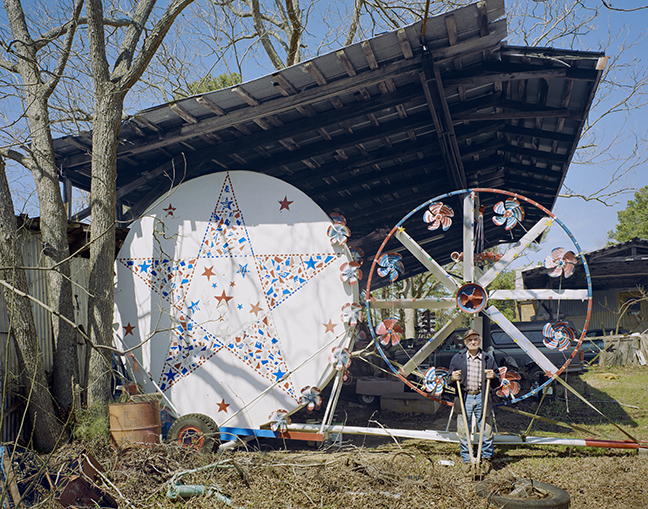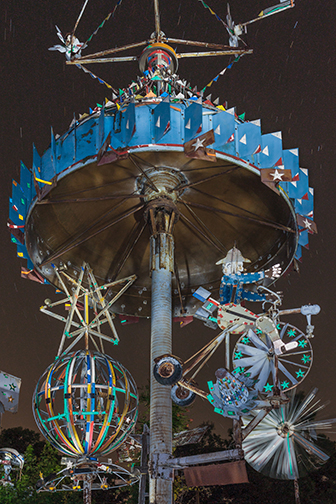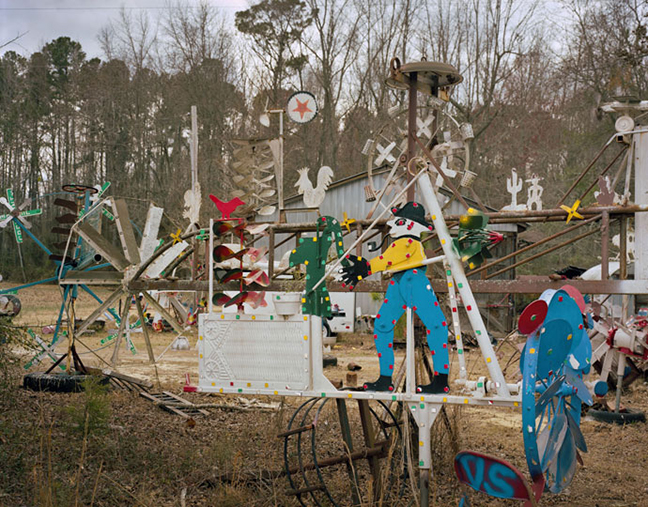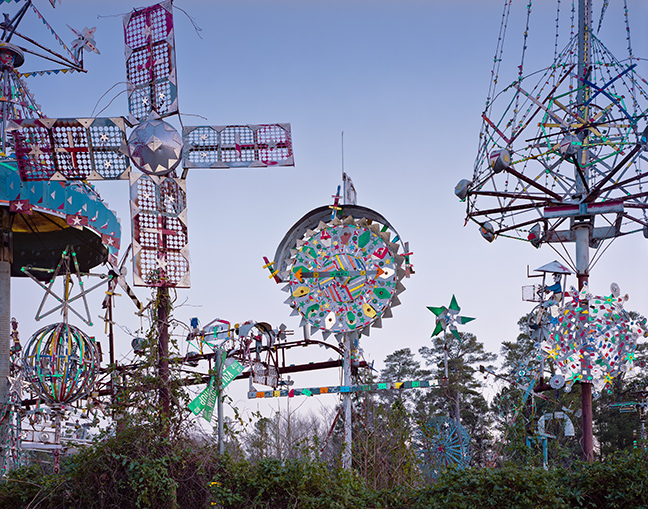Vollis Simpson Site, Wilson, NC




The Site
Vollis Simpson spent a life-time as a fixer, moving and demolishing buildings and repairing and inventing machinery in his small North Carolina hometown of Lucama. As he worked, he collected remnants from his jobs. Once retired, he transformed this detritus into thirty monumental wind-powered whirligigs. He installed them throughout his property over a period of seven years, continually adding components and decorating the surfaces. They depicted scenes from his life and the region, including farmers, farm animals, airplanes, and bicycle riders. Many of them were embellished with cut road signs that created dazzling plays of light from the headlights of passing cars.
The nearby town of Wilson purchased the whirligigs in 2010 and undertook an ambitious project to move, conserve, and reinstall them in a downtown park. Simpson died in 2013, but the park, the Vollis Simpson Whirligig Park, was on its way to completion. When Kohler Foundation, Inc., stepped in to help finish the project in 2016, several smaller whirligigs and one large one were gifted to the John Michael Kohler Arts Center. Today, the park is open to the public.
Vollis Simpson
1919–2013

Vollis Simpson was born to a farming family of twelve children. Growing up, he learned ad hoc engineering by helping his father move buildings. Simpson was drafted for one year of military service in 1940, at age twenty-one, but with the U.S. entry into World War II, Simpson served a five-year term in Saipan. During his service, he was fascinated and overwhelmed by the scale of the military equipment he was exposed to in the Mariana Islands.
Upon his return to his hometown of Lucama, North Carolina, around 1950, he opened a shop with several friends, repairing farm tools, broken factory equipment, cars and trucks, and sometimes, moving buildings. Always keen on finding usable parts, as early as 1952 Simpson began to save odds and ends, including entire cars and decommissioned airplanes, in outbuildings that dotted his property. After his retirement in the early 1990s, Simpson used his stockpile of stored materials to build over thirty monumental wind-driven whirligigs, some as tall as sixty feet and weighing five tons.
In 2010, the nearby town of Wilson decided to move, conserve, and reinstall the whirligigs at a downtown park named in Simpson’s honor. Before his death in 2013, he witnessed the first fully restored whirligigs being installed.





